|
|
Post by jkjblue on May 14, 2017 16:13:11 GMT
|
|
|
|
Post by jkjblue on May 23, 2017 14:14:52 GMT
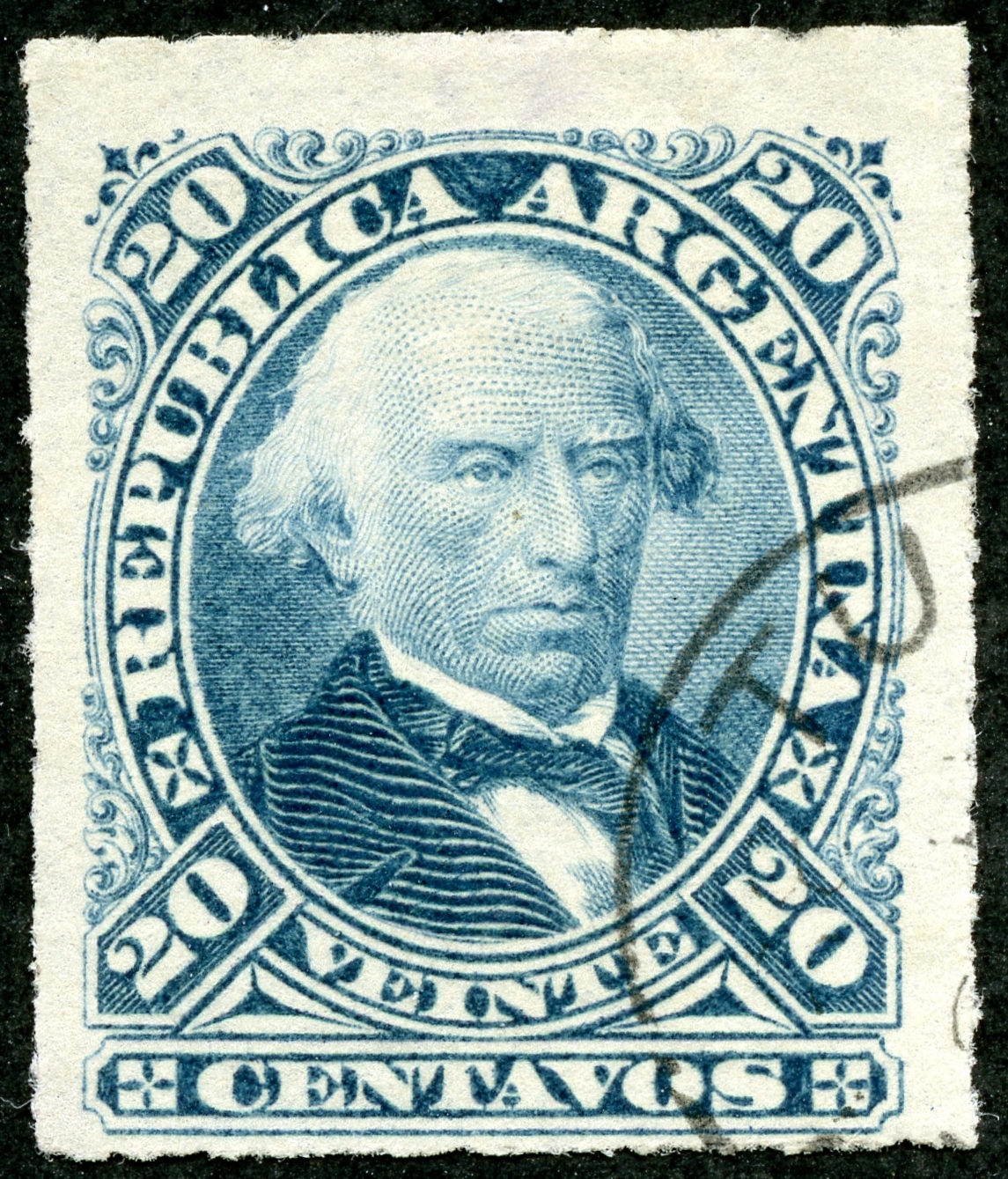 bigblue1840-1940.blogspot.com/2017/05/stamps-of-argentina-1858-1892.html bigblue1840-1940.blogspot.com/2017/05/stamps-of-argentina-1858-1892.htmlThe 1858-1892 stamp era for Argentina requires very little watermarking. But, even with selecting for a smaller period, I will only have the time to cover and highlight certain issues and stamps. One of the joys of South America in general, and Argentina in particular, are the modest CVs of the classical era stamps. If we look at the 1858-1892 time period for Argentina, there are 125 major descriptive numbers for regular and official stamps. Of those, and selecting for CV <$1-$10+, there are 88 stamps available, or 70%. !! Compare that with the cost of the 19th century U.S. ! |
|
|
|
Post by jkjblue on Jun 4, 2017 15:04:37 GMT
|
|
|
|
Post by jkjblue on Jun 13, 2017 14:15:02 GMT
 bigblue1840-1940.blogspot.com/2017/06/stamps-of-1919-22-armenia-what.html bigblue1840-1940.blogspot.com/2017/06/stamps-of-1919-22-armenia-what.htmlFor the purposes of the blog post, I will look at the rather depressing situation with the forged overprints of the 1919-20 Russian Imperial stamps. Next, a review of the 1920 Chassepot issue and their reprints/forgeries will be done. Finally, I will look at a few reprints and frank forgeries of the 1921-22 pictorials during the Soviet era. |
|
|
|
Post by jkjblue on Jun 22, 2017 15:57:00 GMT
|
|
|
|
Post by jkjblue on Jul 5, 2017 20:56:44 GMT
 bigblue1840-1940.blogspot.com/2017/07/roo-stamps-of-australia-watermarks-and.html bigblue1840-1940.blogspot.com/2017/07/roo-stamps-of-australia-watermarks-and.htmlThe typographic "Kangaroo and Map" stamps of 1913-1945 Australia, affectionately known as the 'Roos, are a delight for the WW collector and specialist alike. In fact, considering the 1913, 1915, 1915-24, 1929-30, 1932-36 five major issues (with five different watermarks as well), the watermark variations (inverted, sideways), the many recognized shades, and the four major die variations, the 'Roos offer a lifetime of study. How should the WW collector approach, then, the 'Roos? |
|
|
|
Post by jkjblue on Jul 13, 2017 14:12:41 GMT
 bigblue1840-1940.blogspot.com/2017/07/australia-georges-kgv-stamps.html bigblue1840-1940.blogspot.com/2017/07/australia-georges-kgv-stamps.htmlAustralia, which only became federated in 1901, was of two minds when it came to the British monarchy: either for or against. The "Roo stamps of January, 1913 were favored by the Labor Party, who was anti-monarchist, and in power at the time. King George V (who took an active interest in stamps) was a little puzzled, and not a little put out that he did not appear on Australia's first regular issue. But the Liberal Party came into power, and they were much more friendly toward the monarchy. Hence, the "Georges" or the "KGV Heads" stamps, were launched in December, 1913 with the engraved 1p red. |
|
|
|
Post by jkjblue on Jul 22, 2017 14:26:43 GMT
|
|
|
|
Post by jkjblue on Aug 3, 2017 16:15:58 GMT
 bigblue1840-1940.blogspot.com/2017/08/austria-1858-59-embossed-stamp-issues.html bigblue1840-1940.blogspot.com/2017/08/austria-1858-59-embossed-stamp-issues.htmlOn November 1, 1858, a new set of stamps, featuring the 28 year old Emperor, Franz Josef I, was released. There were five denominations for Austria, and five for Lombardy-Venetia. The issues were valid throughout the Empire. Because the stamps had embossed portrait flaws (broken loops- Type I), they was replaced fairly soon, as Type II (complete loops) had already appeared by December 1858. And so the fun begins for the assiduous WW collector! |
|
|
|
Post by jkjblue on Aug 15, 2017 15:55:10 GMT
 Austria 1863 Scott 26 15kr yellow brownAs three of the stamps (5kr rose, 10kr blue, 15kr yellow brown) only have a used CV of <$1-$3+, a collection of these stamps, in the pursuit of socked on the nose (SON) cancellations, would be interesting indeed. !! Austria 1863 Scott 26 15kr yellow brownAs three of the stamps (5kr rose, 10kr blue, 15kr yellow brown) only have a used CV of <$1-$3+, a collection of these stamps, in the pursuit of socked on the nose (SON) cancellations, would be interesting indeed. !!
bigblue1840-1940.blogspot.com/2017/08/austria-l-v-1860-64-franz-josef-coat-of.htmlThe early Austria 1860-61 & 1863 issues continue with embossed printing, introduced with the 1858-59 issue, and covered in the last post. Franz Josef was placed on the 1860-61 five stamp issue, with his profile portrait switched from facing left to facing right. And then the 1863 issue of five stamps changed the embossed center to the "Coat of Arms". Lombardy-Venetia likewise had a two stamp 1861-62 and a five stamp 1863-65 issue. The embossed technique for stamp printing has never been very common. Other countries that used this printing method include early Germany, Bavaria, Lubeck, Mecklenburg-Strelitz, Oldenburg, Prussia,Saxony, Schleswig-Holstein, Wurttemberg, early Sardinia and Italy, Heligoland, and Gambia (extensively). That's about it. Can readers think of any other examples? |
|
Beryllium Guy
Moderator 
Posts: 5,912  What I collect: Worldwide Stamps 1840-1930
What I collect: Worldwide Stamps 1840-1930
|
Post by Beryllium Guy on Aug 16, 2017 2:37:57 GMT
The embossed technique for stamp printing has never been very common. Other countries that used this printing method include early Germany, Bavaria, Lubeck, Mecklenburg-Strelitz, Oldenburg, Prussia,Saxony, Schleswig-Holstein, Wurttemberg, early Sardinia and Italy, Heligoland, and Gambia (extensively). That's about it. Can readers think of any other examples? Great posts as always, Big Blue! Early stamp issues of Portugal were also embossed, as well as some of the early Russia coat-of-arms issues, I think. I am away from home at the moment, so no access to my collection to check these assertions, but I think that they are correct. And of course, postal stationery from many countries, including the US and Canada, have embossed examples. |
|
|
|
Post by jkjblue on Aug 16, 2017 4:10:34 GMT
Beryllium Guy- Oh, I forgot about Portugal - of course! Also Great Britain Scott 5-7.
Thanks!
|
|
Beryllium Guy
Moderator 
Posts: 5,912  What I collect: Worldwide Stamps 1840-1930
What I collect: Worldwide Stamps 1840-1930
|
Post by Beryllium Guy on Aug 19, 2017 6:20:10 GMT
Beryllium Guy- Oh, I forgot about Portugal - of course! Also Great Britain Scott 5-7. Thanks! Now that I am back home and can check my collection and catalogue, here are some specifics on other embossed stamps: Austria #6-16 Portugal #1-51, 570 Russia #87, 137-138* *Scott does not indicate explicitly that these issues are embossed, but there is a note which states: " Nos. 87g, 137b, and 138b often show the eagle with little or no embossing." So, by inference, these stamps are generally embossed. And of course, you are absolutely right about Great Britain #5-7.... How silly of me to forget, as I actually have one of these in my collection, although it is a pretty rough copy. Below is a scan of Portugal, Scott #570, with embossed head, issued in 1935. In terms of which country issued the most embossed stamps, Portugal would seem to be the clear winner, with more than 50 different Scott numbers. By comparison, Gambia has 19 different embossed issues. 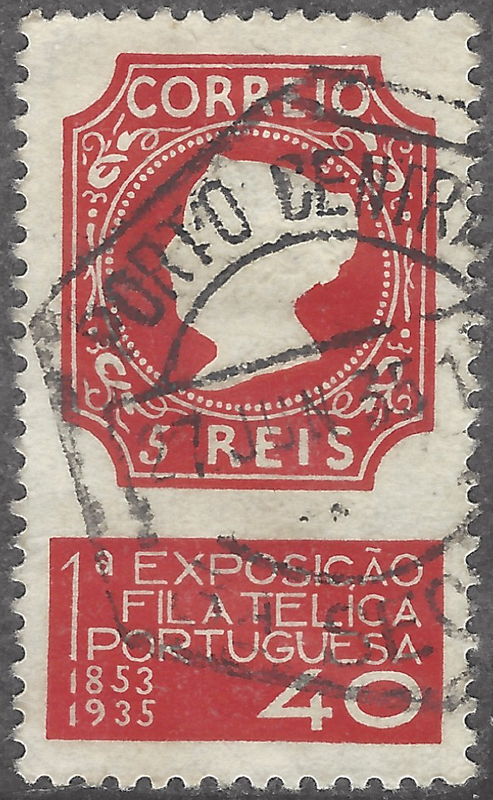 |
|
|
|
Post by jkjblue on Aug 19, 2017 15:42:57 GMT
Thanks on the specifics, especially Russia. I'll check on those when I get home (away this weekend).
Of interest, I brought along some Poland to work on this weekend, and the German Occupation stamps -General Government for Poland- have a semipostal set circa 1940-44 with the German Eagle-Swastika embossed in the center. Who knew? ;-)
|
|
salentin
Member  collecting Germany,where I live and about 20 more countries,half of them in Asia east of the Indus
collecting Germany,where I live and about 20 more countries,half of them in Asia east of the Indus
Posts: 6,514 
|
Post by salentin on Aug 19, 2017 17:14:38 GMT
It is the commemorative set "3rd Anniversary of the NSDAP in the Generalgouvernement" Michel 105-9 (Scott NB28-32).
In the centre of the stamps embossed is the "national emblem" of the GG,an eagle holding or sitting on garland of oak-leaves,
what surrounds a swastika.
|
|
|
|
Post by jkjblue on Aug 21, 2017 20:00:57 GMT
|
|
Beryllium Guy
Moderator 
Posts: 5,912  What I collect: Worldwide Stamps 1840-1930
What I collect: Worldwide Stamps 1840-1930
|
Post by Beryllium Guy on Aug 21, 2017 20:15:21 GMT
Thanks on the specifics, especially Russia. I'll check on those when I get home (away this weekend). Of interest, I brought along some Poland to work on this weekend, and the German Occupation stamps -General Government for Poland- have a semi-postal set circa 1940-44 with the German Eagle-Swastika embossed in the center. Who knew? ;-) Just to finish the thought on embossed stamps, it looks like early Switzerland is also a major participant. Looking in my collection and in the Scott Classic Catalogue, it appears that #14-68, depicting the "Sitting Helvetia" are all embossed. Scott also mentions something about an "embossed watermark", which I never noticed before. So, it looks like Switzerland has even more catalogue numbers of embossed stamps than Portugal or Gambia. Revised list: Austria #6-26 Great Britain #5-7 Poland #NB28-NB32 Portugal #1-51, 570 Russia #87, 137-138 Switzerland #14-68 Revised to reflect more catalogue numbers for Austria, too. Thanks to salentin for providing the Scott numbers on the issues from Poland. I missed those at first because they are post-1940 and therefore not listed in my Scott Classic Specialized Catalogue. |
|
|
|
Post by jkjblue on Aug 23, 2017 20:56:49 GMT
Thanks Beryllium Guy! I've added the list to the blog post.
|
|
|
|
Post by jkjblue on Sept 2, 2017 15:28:47 GMT
|
|
|
|
Post by jkjblue on Sept 11, 2017 14:44:47 GMT
|
|
|
|
Post by jkjblue on Oct 2, 2017 15:18:55 GMT
 bigblue1840-1940.blogspot.com/2017/10/azores-1868-1911-closer-look-at-stamp.html bigblue1840-1940.blogspot.com/2017/10/azores-1868-1911-closer-look-at-stamp.htmlPortugal began issuing overprinted Portuguese stamps for the Azores in 1868, and the overprinted issues continued for the Azores until Portuguese stamps replaced them in 1931. The plan is to broadly cover the overprinted Portugal regular issues of the Azores in two posts: 1868-1911 (this one), and 1912-1930 (next post). There won't be much overlap with the earlier Portugal post coverage, as I only reached the 1898 issue there. The break at 1911 for this post also makes denomination sense. The 1911 and prior stamps were denominated as Reis/Milreis, while the post 1912 issues were in Centavos/Escudo. |
|
|
|
Post by jkjblue on Oct 11, 2017 15:15:13 GMT
|
|
|
|
Post by jkjblue on Oct 20, 2017 15:22:34 GMT
 bigblue1840-1940.blogspot.com/2017/10/TheClassicStampsofNepal.html bigblue1840-1940.blogspot.com/2017/10/TheClassicStampsofNepal.htmlWith the addition of more material, I've decided to re-publish the Nepal blog post. The first 1881 to 1930 stamps? Thirty printings! No wonder early Nepal stamps are definitely specialty territory, requiring intensive study, and a very good reference collection of books! And the stamps were all printed from the original- or retouched- 1881 plates! |
|
|
|
Post by jkjblue on Nov 1, 2017 16:01:39 GMT
 bigblue1840-1940.blogspot.com/2017/11/baden-closer-look-at-stamps-and-issues.html bigblue1840-1940.blogspot.com/2017/11/baden-closer-look-at-stamps-and-issues.htmlLocated in southwestern Germany, Baden was a Grand Duchy (origin 1806), and a member of the German Confederation. The principal city was Karlsruhe, and the population was 1,400,000 in 1864. Stamps were first issued on May 1,1851, after Baden joined the German-Austrian Postal Union, and continued until 1868. In 1871, Baden became part of the German Empire. The postage stamps of Baden were replaced by those of the German Empire on January 1, 1872. |
|
|
|
Post by jkjblue on Nov 9, 2017 17:03:14 GMT
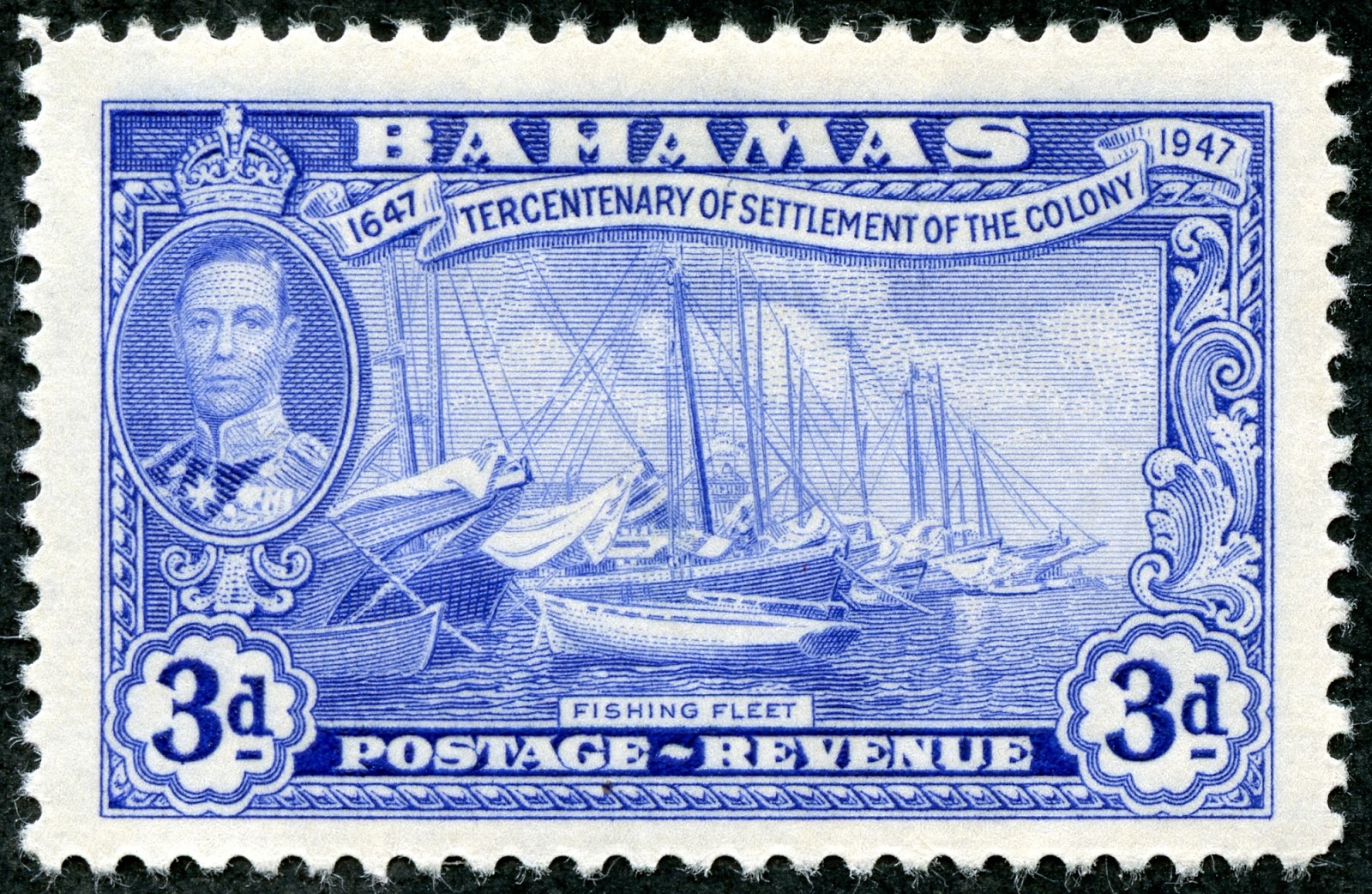 bigblue1840-1940.blogspot.com/2017/11/bahamas-closer-look-at-stamps-and-issues.html bigblue1840-1940.blogspot.com/2017/11/bahamas-closer-look-at-stamps-and-issues.htmlThe 2017 Scott Classic 1840-1940 catalogue has, for 1859-1952, 174 major descriptions for the regular, semi-postal, special delivery, and war tax categories. Of those, 62, or 36%, are CV <$1-$1+. The earliest 25 stamps of the Bahamas (1859-1883) are fairly expensive ($tens) to quite expensive ($hundreds-$thousands). No doubt, the close proximity off the coast of Florida of this British colony increases the philatelic interest for collectors from the USA. |
|
|
|
Post by jkjblue on Nov 18, 2017 16:15:28 GMT
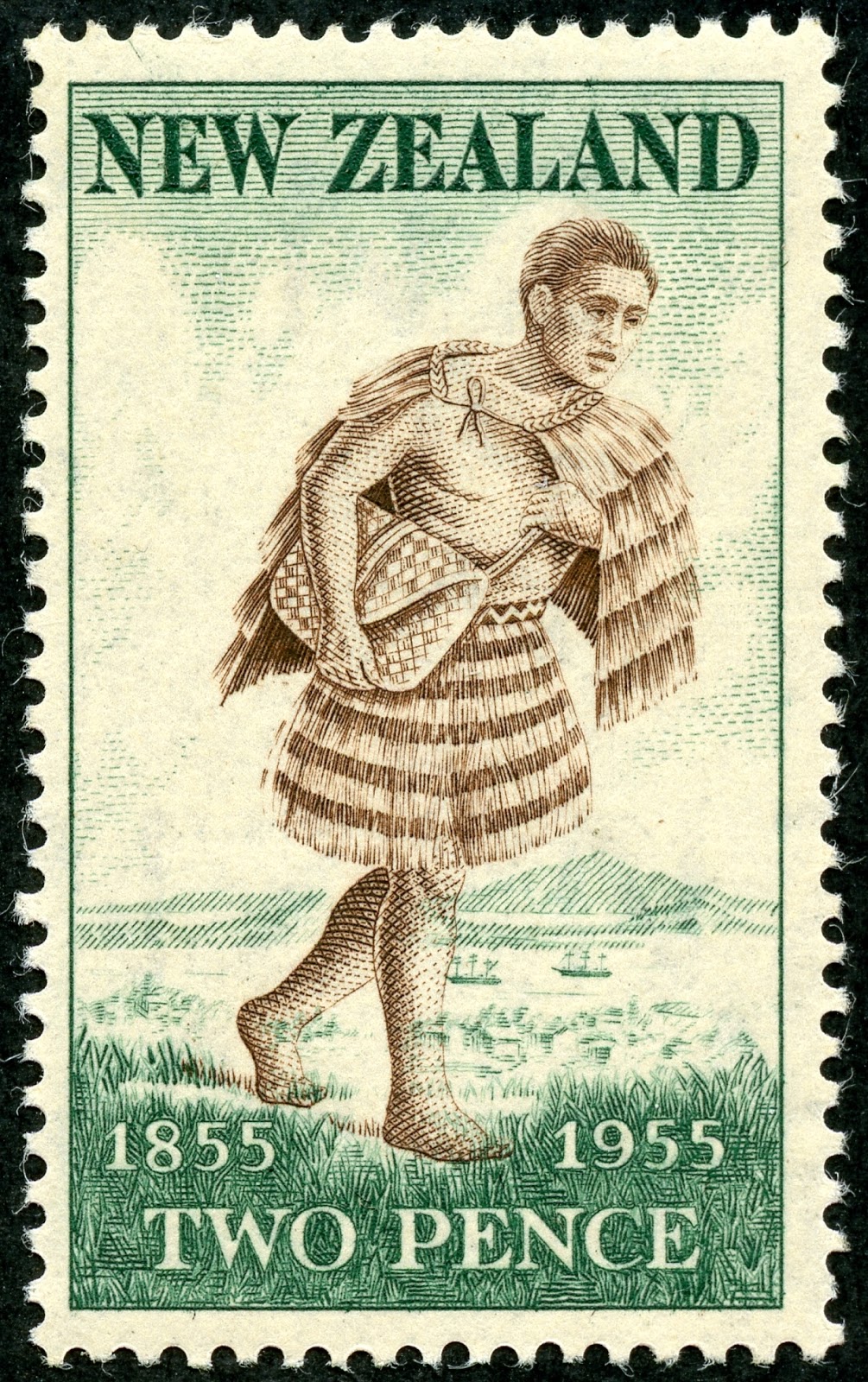 bigblue1840-1940.blogspot.com/2017/11/beyond-classic-blues-introduction.html bigblue1840-1940.blogspot.com/2017/11/beyond-classic-blues-introduction.htmlDuring the six plus year existence of BigBlue1840-1940, the stamp scope has been limited to the first 100 years of stamp production and issues. And for good reason, much of the excitement of WW collecting lies there. But there are practical and economic reasons for the blog to explore beyond the classic blues. |
|
|
|
Post by jkjblue on Dec 4, 2017 18:10:58 GMT
 bigblue1840-1940.blogspot.com/2017/12/bahrain-closer-look.html bigblue1840-1940.blogspot.com/2017/12/bahrain-closer-look.html. Bahrain is an archipelago in the Persian Gulf with Bahrain as the largest and most important island. During the 19th century, it was known for its pearl fisheries. It was a British protected territory, and, of course, during the 20th century, an oil rich one. The capital was/is Manama, and the population was 120,000 in 1940, and 1,234,000 (including 666,000 non-nationals) in 2010. It became an independent sheikdom emirate (which changed to Kingdom of Bahrain in 2002) on August 15, 1971. All of the stamps during this classical era are either overprinted/surcharged stamps of India, or of Great Britain. |
|
|
|
Post by jkjblue on Dec 22, 2017 15:56:34 GMT
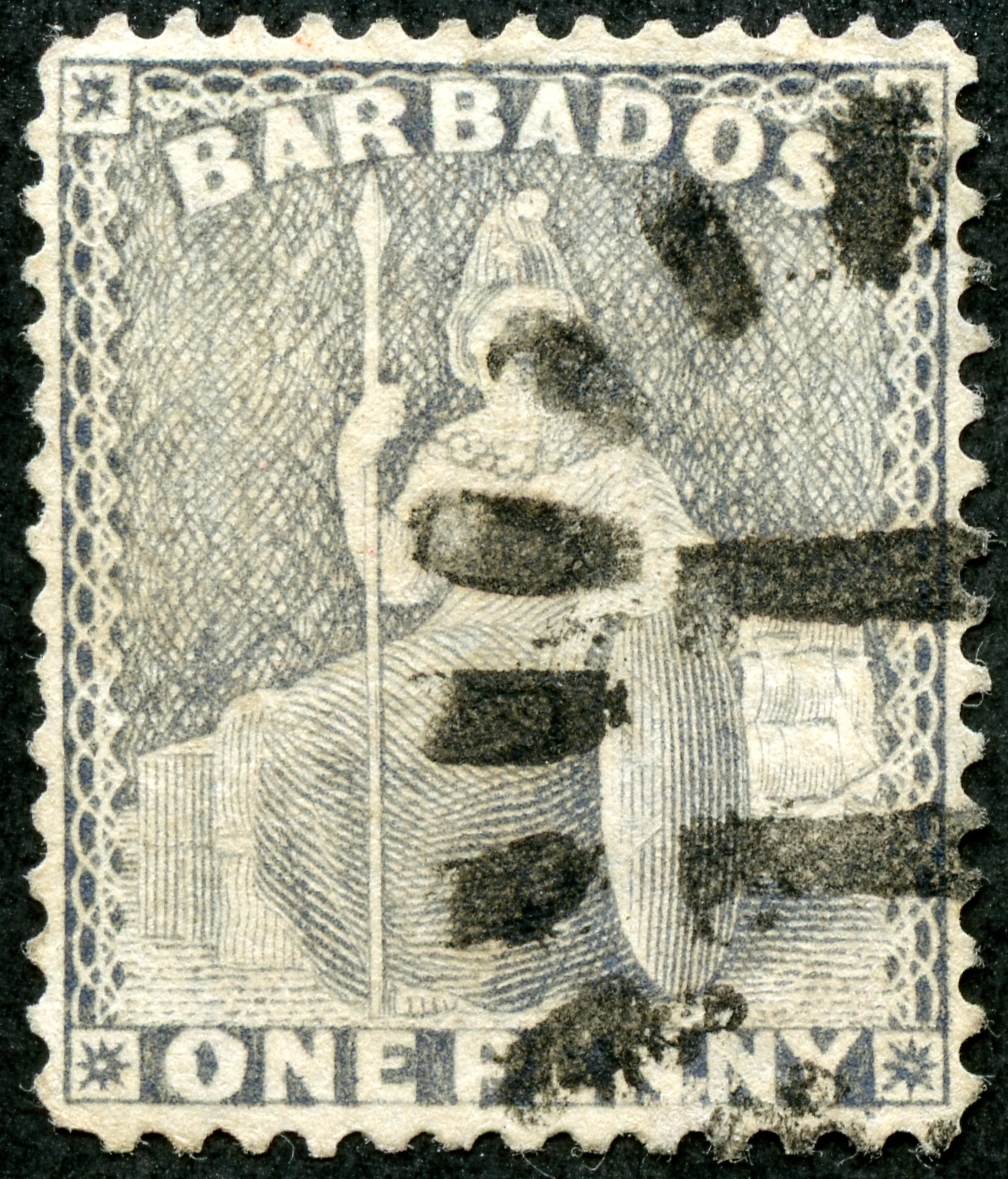 bigblue1840-1940.blogspot.com/2017/12/barbados-closer-look-part-1.html bigblue1840-1940.blogspot.com/2017/12/barbados-closer-look-part-1.htmlUnlike other colonies, Barbados did not use British stamps at any time. The colonial authorities took over the internal postal responsibilities in 1851, while the British continued to operate the Mail Packet Agency at Bridgetown until 1858 for mail overseas. The "Britannia" general design for Barbados was shared by Mauritius and Trinidad. The design was based on a Henry Corbould watercolor. Corbould was also responsible for the sketch of Queen Victoria from which the penny black was derived. The first engraved imperforate Perkins, Bacon & Co stamps were released April 15, 1852. The "Britannia" issues can be found with blued paper, white paper, multiple shades,various perfs, and watermarked/unwatermarked. Clearly, these issues, because of complexity and expense, tend to be the province of the specialist. |
|
|
|
Post by jkjblue on Dec 31, 2017 17:35:40 GMT
 bigblue1840-1940.blogspot.com/2017/12/barbados-closer-look-part-2.html bigblue1840-1940.blogspot.com/2017/12/barbados-closer-look-part-2.htmlOne of the highlights of British Colonies is the George VI pictorial sets produced for many of them. Part of the reason the WW collector looks forward to the pictorial set is the contrast they exhibit vis-a-vis the relative monotony of the monarch stamps. The Barbados George VI engraved set was released in 1950 with the new currency: 100 Cents = 1 West Indian, later Barbados Dollar. |
|
|
|
Post by jkjblue on Jan 18, 2018 16:35:22 GMT
|
|